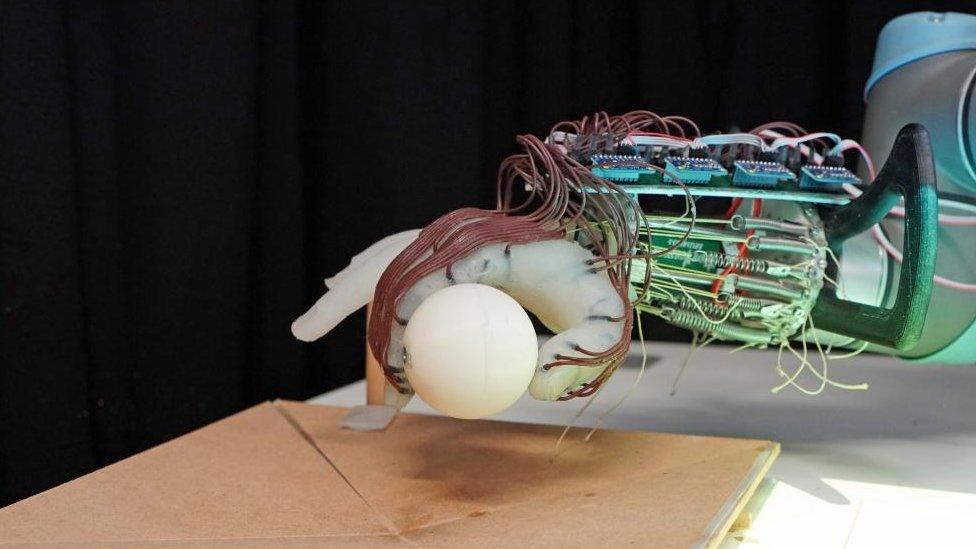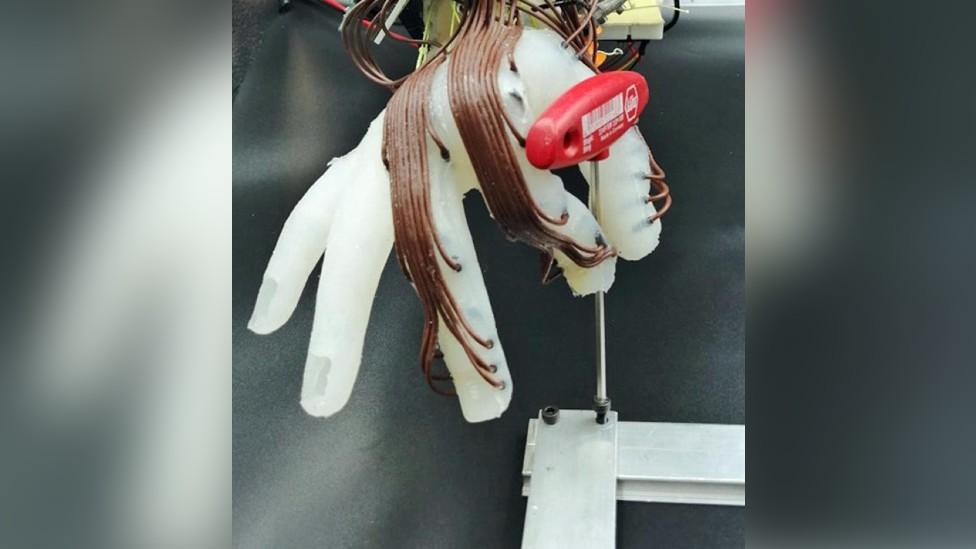Cambridge University scientists create robotic hand able to hold objects
- Published

The 3D-printed hand was initially trained using plastic balls
Scientists have designed a robotic hand that can grasp and hold objects using only the movement of its wrist.
The 3D-printed hand was created by a team at the University of Cambridge.
It was implanted with sensors that enabled it to "sense" what it was touching and more than 1,200 tests were carried out, using objects including a peach, computer mouse and bubble wrap.
Researchers said the human hand was extremely complex and recreating its capabilities was a massive challenge.
The sensors act like the robot's skin to give it information about the objects it is holding
Dr Thomas George-Thuruthel, formerly of the University of Cambridge who is now a lecturer in robotics and AI at University College London, said: "The sensors, which are sort of like the robot's skin, measure the pressure being applied to the object.
"We can't say exactly what information the robot is getting, but it can theoretically estimate where the object has been grasped and with how much force."
Researchers said the technology was low cost and energy efficient as it did not require its fingers to move independently.

This hand was only capable of passive, wrist-based movement and the individual fingers were not fully motorised
The team said humans instinctively knew how much force to use when picking up an egg - but for a robot, this was a challenge.
If the robot applied too much force, the egg could break, and if there was not enough pressure, it could drop the egg.
The robotic hand was able to successfully grasp 11 of 14 objects it was tested on.
Fumiya Iida, professor of robotics at the University of Cambridge's department of engineering, said: "The big advantage of this design is the range of motion we can get without using any actuators.
"We want to simplify the hand as much as possible.
"We can get lots of good information and a high degree of control without any actuators, so that when we do add them, we'll get more complex behaviour in a more efficient package."

Find BBC News: East of England on Facebook, external, Instagram, external and Twitter, external. If you have a story suggestion email eastofenglandnews@bbc.co.uk, external